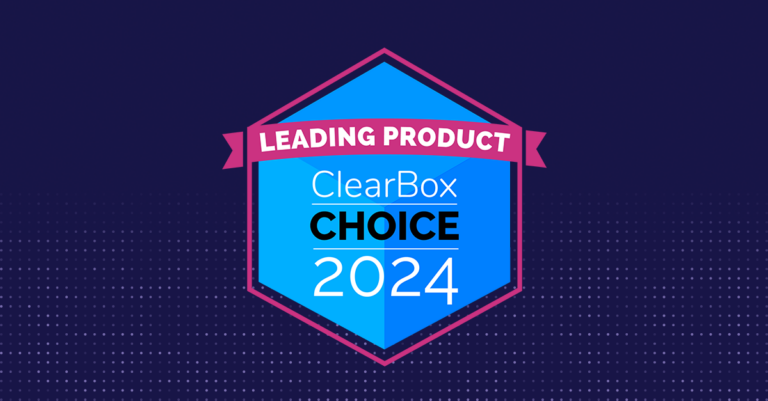There are few enterprise technologies hated as much as corporate intranets. They are generally hated by employees and the HR and Communications team that support them. 57% of employees see no purpose in their company Intranet, yet 75% of internal comms professionals use a company intranet for communication. Something’s not right.
Here’s a brief history.
1990’s – The Intranet is born
The original corporate intranets were invented to facilitate internal communication, collaboration, and information sharing within organizations. They served as private networks accessible only to employees.
The problem was that after launching with much fanfare, they quickly fell out of favor. They became static link farms where content went to die. Employees didn’t go to them.
These Intranets failed for a number of reasons:
1. Lack of Engagement
Many intranets were static, text-heavy platforms that failed to capture the attention of busy workers.
2. Complexity and Clutter
With an abundance of information scattered across various pages and directories, employees struggled to find the resources they needed quickly and efficiently.
3. Information Overload
Intranets were often inundated with an overwhelming amount of information, ranging from company news to policy documents to departmental updates.
4. Passive Engagement
By requiring employees to actively seek out information, traditional intranets promoted passive engagement rather than fostering active participation. Many workers would only visit the intranet when they had a specific need or query, resulting in missed opportunities to engage with broader company initiatives and updates.
5. Limited Reach and Accessibility
Not all employees had equal access to traditional intranets, particularly those who work remotely or in geographically dispersed locations.
6. Inefficient Search Functionality
Many intranets struggled to deliver relevant results quickly and accurately. Employees may waste valuable time sifting through irrelevant or outdated information, diminishing their trust in the intranet as a reliable source of knowledge.
7. Lack of Personalization
Traditional intranets often adopted a one-size-fits-all approach to content delivery, failing to account for the diverse needs and preferences of individual employees.
2000’s – Maybe We Need a More “Modern” Intranet?
These challenges gave rise to a game of Intranet musical chairs where organizations determined the problem was their legacy Intranet technology. They would carve out a budget, spin up an RFP, and go find a new Intranet technology – a more modern Intranet. This actually gave rise to a new category for vendors called “Modern Intranets”, which essentially meant a more modern version of Intranet they just replaced.
The urge to update and innovate often leads companies down the path of replacing their existing Intranet with newer iterations of the same technology. Despite good intentions, this approach often fails to deliver the desired outcomes.
What is the definition of insanity again?Doing the same thing over and over again and expecting different results.
Sure, their new Modern Intranet had some improvements: a more intuitive user interface, more collaboration tools, more integrations to other systems, mobile-friendly accessibility, better search functionality, slightly more relevant content. But they suffered from the same fatal flaw. They forced employees to go to some destination to get what they needed. Employees had to remember where to go, when, and for what. And once they were there, there was no guarantee that they would find what they were looking for.
More often than not, it played out something like this…
Employee: “What’s the process for…[fill in the blank]?
HR Department: “Have you checked the Intranet? It’s all listed there.”
Employee: Thinks…Ugh. Why do I have to go to a stupid Intranet? I never find what I need.
HR Department: Thinks…Ugh. Why won’t people go to the stupid Intranet? Why do we bother putting information there?
2024 and Beyond – A Complete Rethink is Needed
Many organizations are convinced that if they could just build “the one-stop-shop”, “the digital front door”, or “the mother of all portals employees would come and be able to find everything they needed when they needed it.
Intranets convinced many smart people in HR, IT, and Comms that, “If you build it, they will come.” But the employees didn’t come. They didn’t come to the traditional corporate intranet, nor did they come to the new Modern Intranet.
The fundamental flaw lies in their reliance on employees to actively seek out information by navigating to a centralized destination. In today’s digital age, where information is abundant and attention spans are fleeting, this approach will never work. Instead, the focus should shift towards delivering information to employees proactively, at the right time and through the right channels, to maximize engagement and productivity.
Consumer brands figured this out a while ago. No longer is it enough to have a great product and simply build a great website. The buyers won’t come. The most successful brands are activating customer data to deliver timely and personalized messages at key moments, driving up customer engagement, customer advocacy, and brand loyalty. Take for example the couple who just purchased their new home and start to receive personalized offers for new home furnishings, moving services, or deals on home insurance. The most successful brands meet consumers where they are, at the right time, making purchasing natural and easy.

Information Should Come to Employees, Not the Other Way Around
It’s time to face the facts and rethink the entire Intranet strategy. For decades, Intranets have operated on the premise that employees will regularly visit a designated platform to access updates, announcements, and resources. Some organizations have even built their Intranets around HR services portals, thinking that employees will eventually have to go there when they need something from HR. That may be true, but likely will happen less than a handful of times a year, which makes regular communication a challenge.
Rather than relying solely on employees to seek out information, companies should leverage technology to deliver personalized content to employees when and where they need it most. This requires organizations to shift their thinking in how they communicate with their employees.
Instead of having the Intranet as the destination, forcing employees to remember to go there, we must put the employee at the center and have the technologies go to them. In a technology-centric approach, organizations put the technology at the center and force the employee to adapt to it. In an employee-centric approach, organizations understand each individual employee, including when and how they need to receive communication, so the technology adapts to the employee. The Intranet still plays an important role. Instead of being a central place that forces employees to come to it, it’s ONE of the ways organizations can communicate with their employees, but not THE way.

More often than not, when an employee needs information that would typically require them to go to an Intranet, it’s because they are going through some type of moment. It could be a work-related moment like a performance review or a promotion, or it could be a personal moment like welcoming a new child into the family or relocating. In all of these moments, organizations have the opportunity to recognize what moment an employee is going through and proactively deliver the right information and guidance to support great employee experience.
A complete intelligent communication platform can be used to deliver this employee-centric approach, with an Intranet being a key component. It requires the following capabilities:
Universal Employee Profiles
For every single employee, the system gathers key attributes from multiple people and HCM systems including job, role, location, preferred language as well as event data like being a new hire, or being promoted. The platform uses this data to intelligently deliver the right message to the right person at the right time. The system can also start pulling in behavioral data, such as what content is being interacted with, what channels are being used, on what day and what time. The profile continuously gets smarter making future comms even more relevant and personalized.
Omni-Channel
Recognizing that employees have different communication preferences, organizations should embrace an omni-channel approach to content delivery. From email, mobile apps, messaging systems, digital signage, and yes, even Intranets, information should be accessible across a variety of channels to ensure they can be easily consumed in the flow of everyday work.
Intelligent Delivery
Utilizing machine learning and AI, organizations can deliver personalized messages and communication to employees based on their role, location, and behaviors. Whether it’s a company-wide announcement, a project update, or a relevant training resource, employees receive timely information without having to actively search for it. It’s not enough to just make communications available in many channels, the system should know enough about each employee to make the communication available in the right channel for each employee.
Journey Automation
In order to achieve a high level of personalization, organizations need to be able to automate the delivery of communications for each employee moment. On any given day, it might be one employee’s first day orientation, while another just got promoted to a manager role, while another is preparing to go on maternity leave, and for several others, it’s their last day to make their benefits selections for open enrollment. HR and Comms teams simply don’t have the scale to manually deliver so many different communications to so many different employees. Instead they need to pre-build communications for a variety of moments and have them automatically triggered based on employee data.
Intranets are no longer sufficient to meet the communication needs of today’s dynamic, interconnected, and information-rich workplaces.
By shifting to an employee-centric model where information comes to employees proactively, organizations can enhance engagement, foster collaboration, and drive productivity across the organization. It’s time to bid farewell to the outdated intranet of yesteryear and embrace the future of intelligent communication.












